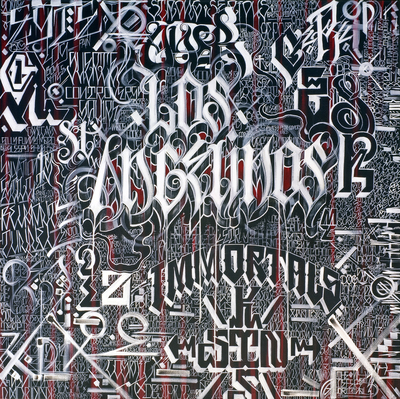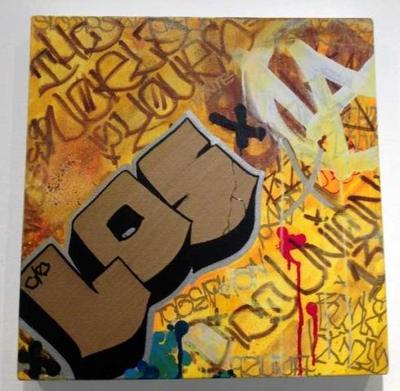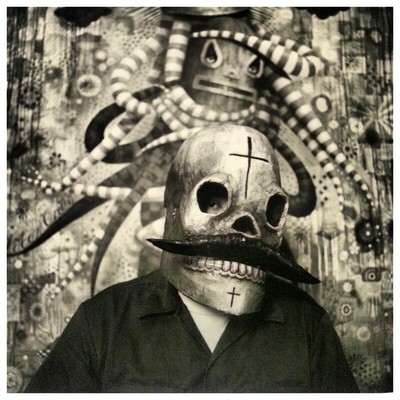Los Angeles: A city of glaring contrasts and contradictions -- multi-million dollar homes and abject poverty. It has libertine lifestyles and harsh, selective law enforcement amongst racism, rebellion and rock and roll. Bright sunlight that can never expose all the city's dark secrets. These contrasts, born during the post-war era, reached a climax during the 1980s with the explosion of the crack epidemic, gangs, vandalism and the stepped up police response.
The youth community's reaction to police suppression resulted in fierce artistic expression: Punk rock in clubs and graffiti on walls exploded as rebellious manifestations -- a revolution against the social ramifications suffered on the streets. These forms of art were ruptures from previous art styles -- fast, bold, aggressive and dark.
While the music was legal, the graffiti wasn't. Born out of the mural tradition -- think Siquieros, Rivera, San Diego's Chicano Park collectivist murals -- graffiti emerged from the shadows, from staking territory and marking the fallen on walls to become an outlaw art form, drawing on heavily Chicano lettering styles and imagery. Now this art, drawn from the blood in the streets and social injustices, has moved onto gallery walls, bringing with it an awareness of the conditions that birthed it and the shifting social morés that continue its progression.
The influence of Los Angeles' historically Latino culture is an ongoing current in contemporary popular art genres from street art to Pop Surrealism, reflected in the use of religious motifs and skulls, pin-striping and lettering styles, ranging from the bold Old English to flowing script, squared-off serif printing, with a gradual transition to the use of Asian-influenced calligraphy. It became clear that Los Angeles' many tensions and contradictions, flowing on the underground river of Latino influence, were producing a distinct sub-genre. And while this style was based in L.A., its influence was being felt throughout the world. To define the style and its foundations, journalist and author Rodrigo Ribera d'Ebre coined a term, Dark Progressivism. He explains:
There is a spectre that haunts the international art community, the spectre of dark progressivism, and it comes from Los Angeles. This is a new perspective on local art, on a nativist tradition... Dark; that which reflects the bleak, somber and unsettling nature of urban complexity expressed through social commentary, while in direct opposition to popular, glamorous and commercial undertones of mainstream aesthetic. Progressivism; a set of forward-thinking collective principles, such as the knowledge, skills and abilities in creation, to help better understand and interpret the human condition. It is a simple subgenre that evokes moods and a distressing experience, one that tells the trajectory of rebellion, one that represents a rupture from the past.
D'Ebre and fellow filmmaker James Yi have set out to document Dark Progressivism and the rise of Los Angeles urban art in a film, Dark Progressivism: On Rupture and Rebellion, which begins shooting in May, 2014. The film centers around the Getty Research Institute's Getty Black Book, (LA Liber Amicorum) a unique artists' book that binds together 143 works on paper from more than 150 of Los Angeles's leading graffiti and tattoo artists. LA Liber Amicorum will be on view at the El Segundo Museum of Art as part of the exhibition SCRATCH, opening June 8 and running through September 21, 2014. For their documentary, D'Ebre and Yi will conduct a series of interviews with artists such as Chaz Bojórquez, Prime, Defer, Big Sleeps, Saber, Patrick Martinez, Miles "The Mac" McGregor, United Group of Los Angeles Residents (UGLAR) and Cryptik who share d'Ebre's perspective and aesthetics. Many of the artists will be revealing for the first time personal stories and experiences that have shaped their worldviews and naturally, by extension, their art.
As the installation of SCRATCH begins and filming commences for Dark Progressivism, D'Ebre has issued a call to action for all artists and creatives:
Our subcultures and lifestyles have not been well documented. We have been ignored. It is up to us to make the contribution. My perspective is dark progressivism; it is the vehicle that will drive the spectre foreword. Grab your pencil, paper, guitar, microphone, letterpress, computer, video or digital camera, paint brush, drafting board, tattoo gun, spray can, whatever your tools may be and reassess your understanding of the complex urban environment that is Los Angeles! It is your social obligation to represent our region. This is the march of the region! The roar of dark progressivism!
The film's first fundraiser is a silent auction of art by artist featured in the film including Gajin Fujita, Alex DEFER Kizu, UGLAR Works, Rodrigo Ribera d'Ebre and their friends like Phowl, Roten and others, at Footsie's Bar, 2640 N. Figueroa, 90065, from 6pm to 9pm on May 15, 2014.
All art work used by permission of the artists.


